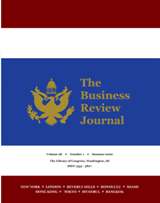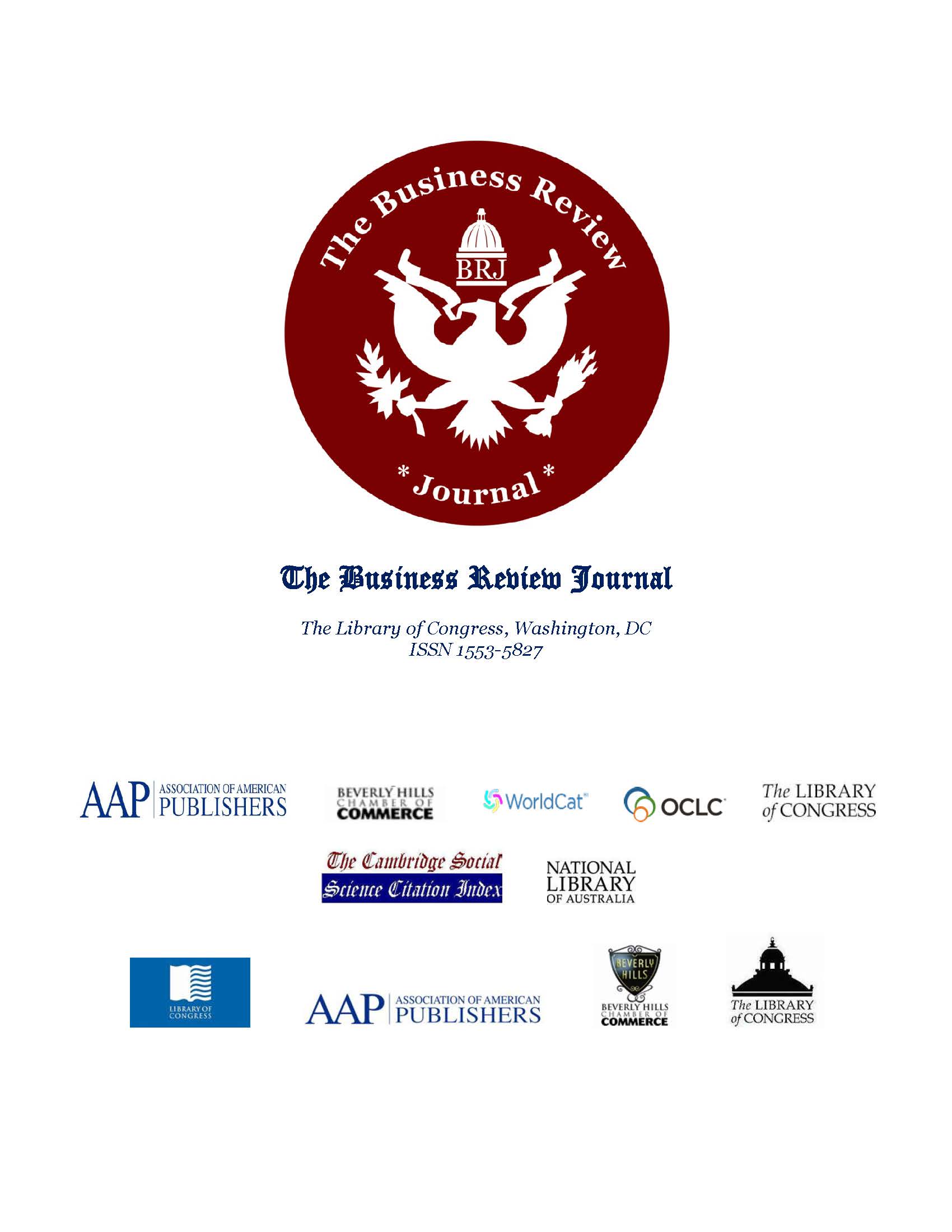|
The Impact of
Firms’ Aggregate Risk on Long-Run Performance:
IPO Versus Matched
Non-IPO equities
Dr.
Marie-Claude Beaulieu, Université Laval, FSA, Qc, Canada
Dr. Habiba
Mrissa Bouden, Université Laval, FSA, Qc, Canada
ABSTRACT
This paper focuses on the
long-run performance of issuing versus comparable non-issuing firms. While most
of the previous literature only accounts for the common risk factors to compute
abnormal returns, this paper investigates a new approach that also considers the
firms’ aggregate volatility processes to measure the long-run performance of
their calendar-time portfolios. Our findings show that the firms’ aggregate
risks differently affect IPO and comparable non-IPO equities’ returns during the
first three years of IPO trading. Our results also reveal that when controlling
for the portfolio’s volatility risk, the apparent underperformance of IPOs with
respect to non-issuing firms is a reflection of a lower response to the
volatility risk of IPOs relative to their matched non-issuing peers.
Previous research on
initial public offerings
(IPOs) reveals a long-term anomaly of IPO underperformance (Ritter, 1991 and
Loughran and Ritter, 1995), which challenges our understanding of asset pricing.
These authors report that IPOs underperform the market (or/and similar
non-issuing firms) in the long-run when they compare IPOs’ returns to common
market index returns1 (and/or long-run returns of comparable firms2).
Behavioral3, financial4, agency problems5 and
IPO market timing6 are proposed explanations for this phenomenon.
Meanwhile, empirical studies on IPO long-run performance present mixed evidence.
Brav and Gompers (1997) and Gompers and Lerner (2003) did not find evidence of
long-run IPO underperformance. Barber and Lyon 12 (1997), Kothari and Warner (1997)
and Gompers and Lerner (2003) documented that the IPO long-run performance
depends on the methodology used to measure abnormal returns, which could explain
the mixed evidence in the behavior of IPO performance. We note that the
previous IPO literature does not consider firm risk in the measurement of IPO
abnormal returns. Previous studies, such as Ritter (1991), often use the
cumulative abnormal returns7 (CARs) and the buy-and-hold abnormal
returns8 (BHARs) that are used in classic event studies.
Full text
*
The Value of
Creativity: Creativity as a Valuable Form of Symbolic Capital in Organizations
Dr. Frederik
Hertel, Aalborg University, Aalborg, Denmark
Dr. Irina A. Weisblat,
Ashford University, San Diego, CA
ABSTRACT
Previous analysis (Hertel, 2015) indicates that workers
doing industrial cleaning in the food industry are forced to be creative in
their everyday organizational life. Hertel and Wicmandy (2017) show that
everyday creativity becomes a tool for reducing time consumption and, thereby,
enables the workers to solve additional cleaning tasks that were not initially
included in their work load. According to Richards (2010), there is a lack of
scientific methods for assessing everyday creativity. We conducted a case
analysis in order to clarify whether such creativity can be compared to and
understood as a new kind of symbolic capital originally explored by Bourdieu
(1990, 2002) and Portes (1998). It is our hypothesis that a method for valuing
everyday creativity must be based on a three-dimensional model involving: the
economic contribution, the social impact, and the character of the creativity
involved. The first dimension is economic and it aims to rate the contribution
to the production of surplus. The second dimension intends to rate the social
impact of the everyday creativity produced. The third dimension is the character
of the creativity and it rates the complexity of the everyday creativity
involved. The aim of this article is to contribute to the development of a
method for valuing everyday creativity. Before addressing this question, we
would like to illustrate why it is of interest to deal with valuing creativity.
Our interest in the subject started when we were working on the case study (Hertel
& Wicmandy, 2017) conducted in a company specialized in industrial cleaning in
the food industry. We realized that industrial cleaners must be considered
creative. However, it was not a big “C” (Richards, 2007) but a small “c”, also
known as everyday creativity. We studied the team of cleaners composed of a mix
of ethnic Danes with traditional attitudes and migrants from the Eastern
European countries. The study began three years ago and the purpose of it was to
understand the management style and methods used in developing strong teams of
industrial cleaners. We observed the team manager who faced several challenges
of daily operations. The case study provided a wealth of ethnographic material
about the everyday work environment and team management. Before conducting the
case study, we had an expectation that the team members received
on-the-job-training and followed some specific instructions when performing
their job duties. What we actually saw was a management style that allowed each
individual team member to plan their work, execute the work activities, and
evaluate the work performed.
Full text
*
Is Corporate Social
Responsibility a Guarantee of Financial Performance?–
With the Multi-faceted
Analysis on FTSE Global Index as an Example
Dr. Ming-Jian
Shen, Takming University of Science and Technology, Taiwan
ABSTRACT
Is there an
inevitable contradiction between the pursuance of shareholder’s profit
maximization and corporate social responsibility behaviour? This study uses the
panel data model to analyse the FTSE Global Index of constituent stocks, based
on various aspects such as industry characteristics, scale, country difference,
and taxation; explores, in detail, the relationship between the CSR practised by
the corporation, its levels, and financial performance as well as validates
whether or not the implementation of CSR results in a tax-saving effect for the
business and a time lag effect on financial performance. The results of the
empirical analysis aid in the clarification of the perceived shortfall between
CSR and performance in the past; for example, research showed that there is a
variation in the performance of the return on assets and return on equity in
financial industries, and verified that CSR indeed has a tax-saving and lag
effect on financial aspects. Overall, the empirical results tend to support the
hypothesis on the influence brought about by society and the implementation of
CSR results in a positive influence on financial performance. The
subprime mortgage crisis in the United States in late 2007 and the filing of a
formal request for bankruptcy protection in September 2008 by Lehman Brothers,
an American investment company, led to a financial tsunami, the need to rebuild
the global economy and a significant decline in economic growth. This was mainly
due to the real estate bubble and high financial leverage on financial
engineering operations, affecting the economy all over the world. Significant
losses were experienced by investors which led them to conduct protests in the
streets and accuse the banks of violating the role of a virtuous keeper. As a
channel for trading financial commodities, the banks aimed to achieve optimal
profits but neglected risks and the obligation to provide honest information to
its investors, thus creating a lose-lose situation for both the investors and
the banks in a time when the economy was declining, which shows the importance
of social responsibility between financial credits and investor protection.
Full text
*
Creating Synergies in
Cross-Border M&A – Case Studies of Japanese Outbound Acquisitions
Dr. Shigeru Matsumoto,
Professor, Kyoto University, Japan
ABSTRACT
The success or failure of
mergers and acquisitions (M&A) is determined by the synergies the company
generates after the acquisition. In this paper, we explore the mechanism of
synergy creation from overseas M&A. After investigating horizontal acquisitions
from existing research and their relationship with synergies, we examine, in the
form of case studies, three Japanese companies that have successfully realized
synergies from their acquisitions of European businesses. We find that these
companies achieved sustainable growth and used economies of scope, rather than
of scale, by expanding their products and regional coverages in cross-border
operations. In 2016, the number of overseas acquisitions by Japanese companies
reached 635, which was a record high for the third consecutive year; moreover,
the amount spent on them exceeded 10 trillion yen, a record high for the second
consecutive year. Due to the maturity of the domestic market, an increasing
number of Japanese corporate managers are seeking growth overseas. Internal
reserves of Japanese companies exceeding 400 trillion yen (Ministry of Finance,
2017) combined with a historically unprecedented monetary easing policy meant
that the acquisition activity has continued. On the other hand, the management
of several companies became deadlocked after acquisition. Even recently,
reviewing synergies and profit plans, leading companies such as Japan Post,
Toshiba, and Kirin have reported significant impairment losses in relation to
overseas acquisitions. An acquisition starts with negotiations in which the
buyer offers the target company a price that includes a premium on the
standalone value of the business. If the sellers, or in other words, the
shareholders of the target company are not satisfied with this premium amount,
they will not agree to the acquisition, and it will not proceed. For the buyer,
this premium is a payment for control and, partly, a prepayment for the value
that will be created after the acquisition. As the acquiring company expects to
add greater value to the target, it incorporates these synergies and justifies
the premium. Accordingly, an impairment loss after an acquisition can be
considered a recognition of an overly optimistic outlook in relation to
synergies. How can overseas acquisition lead to sustainable growth in profits?
Full
text
*
The Relationship Among
Research Quotient, Firm Performance, and Biotechnology Industry
Dr. Han-Ching Huang,
Chung Yuan Christian University, Taiwan R.O.C.
Calista Amelia Irawan,
Chung Yuan Christian University, Taiwan
R.O.C.
ABSTRACT
Innovation is one of the
drivers of economic growth since innovation can increase the market value by
producing new products with competitive advantage. Traditionally, innovation is
proxied by patent. Nonetheless, patent is not universal, since more than 50%
companies in COMPUSTAT do not patent their new products (Cooper, Knott, and
Yang, 2017). Therefore, we use Research Quotient (RQ) provided by Cooper, Knott,
and Yang (2017) as an indicator of innovation to avoid the above flaws since RQ
is not based on patent or citation data. Specifically, the RQ measure is better
at capturing the value creation of a firm owing to innovation. In this paper, we
explore the differences between biotechnology industry with higher level of R&D
intensity and other industries with lower level of R&D intensity. We find RQ has
a positive impact on firm value, proxy by Market-to-Book Value. Contrary to our
hypothesis, we find that the relation between RQ and future stock return (or
firm value) is lower in biotechnology industry than in other industries. Firm
innovation are important to firm growth and performance. Nevertheless, Lev and
Zarowin (1999) document that a firm must allocate some budget for R&D spending,
which is calculated as incurred expense, to commit to research-based innovation.
Because R&D may have negative effect on earnings in short term period, some
managers are not prone to invest in R&D. MacKenzie (2005) argues that there is
an uncertain time lag between initial research spending and product revenue,
which could result in unprofitability for that firm.
Patents have
traditionally been associated with innovation of countries and firms (Van der
Eerden and Saelens, 1991). Patents can be defined as indicators of important
technology positions and innovative activity, which can help policy makers and
analysts to measure weak and strong areas in national or firm innovation
systems. Hirshleifer, Hsu, and Li (2013) argue that patent information enables a
firm to estimate other characteristics, such as R&D efficiency and stock market
value. Therefore, we can use the number of patents controlled by a firm to value
a firm’s intangible assets. The higher patent grant is associated with a higher
probability of future profit since patent grant is usually represented potential
a new product in the future. Nonetheless, the marketability of a patent is still
uncertain. Usually, the patent grants do not directly produce future profitable
products, and they just bring a small effect on market value. However, Patel and
Ward (2011) find that the patent system provides some information to indicate
which patents are more likely to generate future profits.
Full text
*
|

 The Business Review
Journal
The Business Review
Journal
.gif)